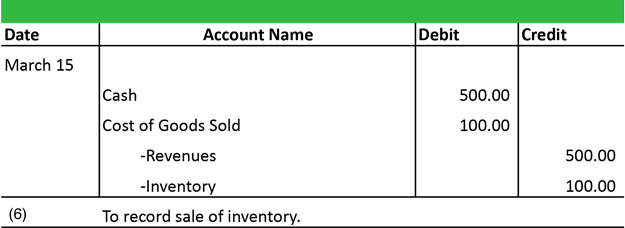Definition: Merchandise, often called inventory, is a good or product that a retailer purchases and intends to sell for a profit. We’ve all familiar with examples of retail inventory in stores like Best Buy and Target. Anything that is on the sales floor for sale is considered merchandise because it’s a product that they are hoping to sell to customers for a profit.
Example
An example inventory journal entry looks like this.
When merchandise is purchased from a wholesaler, it is recorded as an asset by debiting the inventory account and crediting the method of payment like cash or accounts payable. Inventory is not expensed until it is actually sold.
When a customer purchases a product from the retailer, the cash received from the customer is debited to the cash account and the revenues account is credited for the same about. The inventory account is then credited and the cost of goods sold account is debited for the same amount.

Let’s assume a guitar store sold goods for $500 to a customer that cost the store $100. The journal entry to record the sale would look like this.

What Does Merchandise Mean?
As you can see, the guitar store records the cash coming in, inventory going out, the revenues generated from the sale, and the costs allocated to the inventory. In most cases inventory is the biggest asset on a retailer’s balance sheet. Merchandise is listed on a retailer’s balance sheet at the lower of cost or market value. Usually, the retail inventory is purchased from wholesalers at large discounts, so the cost is usually always lower than its market price.


